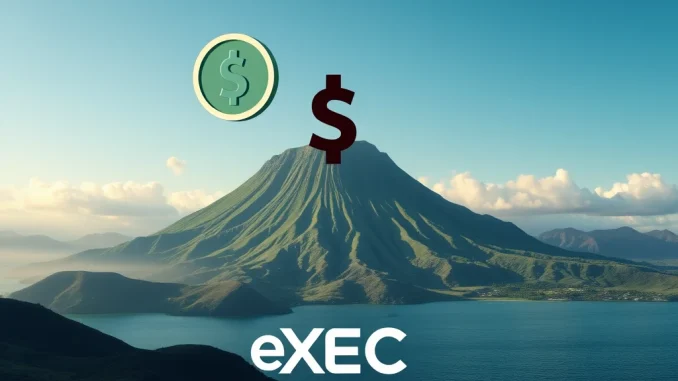
Get ready for some exciting news from the world of cryptocurrency! The government of Tinian, one of the key islands in the U.S. Pacific territory of the Northern Mariana Islands, has just made a potentially historic move. They’ve launched their very own U.S. dollar-pegged stablecoin, dubbed MUSD, on the eCash (XEC) network. This development is creating a buzz, especially considering earlier reports that Tinian aimed to be the first public entity in the United States to issue a dollar-pegged stablecoin on this specific network.
What is the Tinian Stablecoin (MUSD)?
At its core, the Tinian stablecoin, known as MUSD, is designed to mirror the value of the U.S. dollar. This means for every MUSD in circulation, there should ideally be an equivalent amount of U.S. dollars or dollar-denominated assets held in reserve. The goal of a USD-backed stablecoin is to provide the stability of traditional currency within the volatile cryptocurrency market.
Key characteristics of MUSD:
- Pegged Value: Intends to maintain a 1:1 ratio with the U.S. dollar.
- Issuer: Launched by the government of Tinian.
- Underlying Network: Built and operating on the eCash (XEC) blockchain.
This move by a government entity to issue its own stablecoin on a public blockchain is a significant step, highlighting the growing interest of traditional institutions in leveraging distributed ledger technology.
Why eCash (XEC) for This Government Stablecoin?
The decision by the Tinian government to utilize the eCash XEC network for their MUSD stablecoin launch is notable. eCash is a layer-1 blockchain that originated as a fork of Bitcoin Cash. It aims to be electronic cash, focusing on fast transactions and network upgrades.
Reasons why a government might choose a network like eCash:
- Transaction Speed: eCash boasts quick transaction finality, crucial for potential widespread use in payments.
- Scalability: Designed with scalability in mind to handle a large volume of transactions.
- Development Focus: The eCash team focuses on protocol improvements and features that could be attractive for stablecoin operations.
The choice of eCash positions MUSD on a network specifically built for electronic cash use cases, aligning with the potential goals of a government stablecoin.
The Significance: A Government Stablecoin in the Northern Mariana Islands?
The launch of MUSD by the Tinian government is particularly significant because Tinian is part of the Northern Mariana Islands, a U.S. territory. This potentially makes it one of the first instances, if not the first, of a public entity within the broader U.S. jurisdiction issuing a dollar-pegged stablecoin on a public blockchain network like eCash.
Implications of this launch:
- Innovation Showcase: Tinian positions itself as an early adopter of blockchain technology for financial purposes.
- Economic Potential: MUSD could potentially be used for local transactions, tourism, or facilitating easier digital payments within the island and potentially beyond.
- Regulatory Precedent: This move might offer insights or set precedents for how other U.S. territories or even states could approach stablecoin issuance in the future.
While details about the specific use cases and regulatory framework surrounding MUSD are still emerging, the simple act of launching a government stablecoin on a network like eCash XEC is a powerful statement about the evolving relationship between traditional governance and decentralized technology.
Looking Ahead
The successful implementation and adoption of the Tinian stablecoin will be watched closely. Its performance on the eCash XEC network, the regulatory environment it operates within, and its practical use cases will determine its impact. As a USD-backed stablecoin issued by a government entity in the Northern Mariana Islands, MUSD represents a fascinating case study in the intersection of digital currency, blockchain technology, and sovereign finance.
This launch could pave the way for other jurisdictions to explore similar initiatives, further blurring the lines between traditional financial systems and the innovative world of cryptocurrencies. It’s a development that underscores the growing relevance of stablecoins and the diverse applications of blockchain technology beyond speculative trading.



